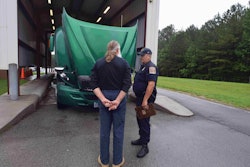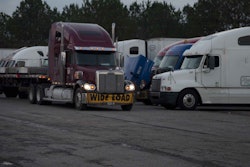One thing that’s struck me about all the complaining over electronic logging devices is that it’s partially misdirected. As one of our unnamed online commenters recently wrote about the Supreme Court’s refusal to hear the ELD lawsuit, “Let’s work on getting the 14-hour clock to stop — the real problem.”
ELDs are just tools, fancy amalgams of clock and GPS. The root problem, indeed, is the hours of service rule. Or put more broadly, regulators’ presumption that any set of work and rest rules, whether simple or complex, can do much to eliminate fatigue without requiring absurd amounts of downtime.
Anytime I’ve ridden with a trucker, it’s been obvious that the hours regs were written for trucking in a galaxy far, far away. They seem to assume a world with no weather problems, no highway accidents, no road construction. They seem to assume all shippers and receivers operate at high levels of efficiency, eager to speed you along your way. They seem to assume drivers are robots with the same sleep needs and habits, regardless of age, health and schedule.
Even the most conscientious drivers have found ways to round the rough edges of the hours system to make it tolerable on a good day, without jeopardizing safety. Then along comes a technology that says hey, buddy, no more of that. You must embrace the literal HOS regs, even if it means driving while fatigued and resting when you’re alert.
So are there better approaches? Various ideas have been floated:
* The most achievable, though modest change would be a tweak of the current rule: broadening the split-sleeper provision. The Federal Motor Carrier Safety Administration is preparing to test fatigue levels when drivers are able to choose sleeper berth hours other than the 8-2 split, such as 5-5, 6-4 and 7-3.
* Build on that move toward greater flexibility and authority to determine your schedule and you get the graduated CDL idea. The current rule could remain, but as drivers accumulate experience and maintain a certain level of safety, they would be granted more freedom to set their own hours.
* Recent advances in technology suggest a radical possibility: real-time fatigue assessment. Using driver-facing cameras or biomonitoring, fatigue – and its absence – could be determined on a current, individual basis instead of lame assumptions from a broad template.
While the split-sleeper change would be fairly simple, there are many complications with the other approaches, too many to detail here. But now that it appears the ELD mandate is about to amplify the shortcomings of the HOS rule, it’s time indeed to address the real problem, not its surrogate.
What do you think would be the best change for handle hours of service? Or the best approach to dealing with fatigue and safety? Comment below.









